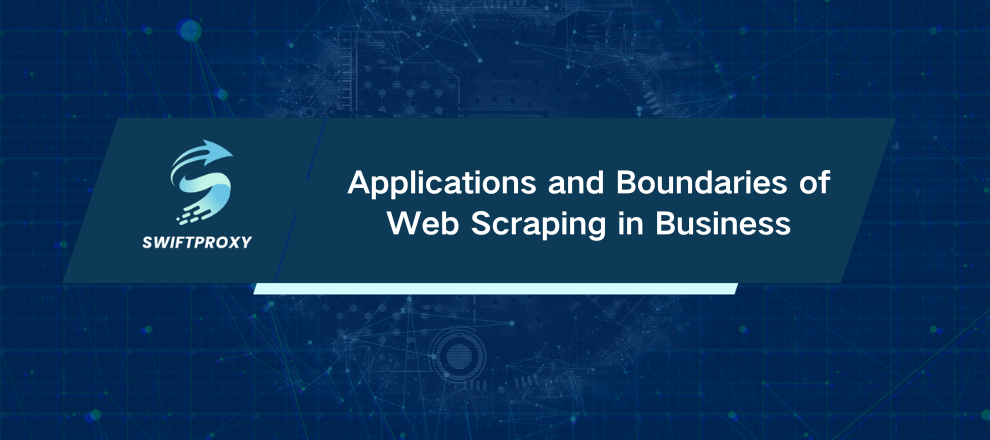Applications and Boundaries of Web Scraping in Business
Every minute, the internet generates over 500 hours of new video content. Imagine the sheer amount of data available for anyone who knows how to grab it. That’s the power—and the temptation—of web scraping. Done right, it can give your business a competitive edge. Done wrong, and it can land you in court. Web scraping isn’t science fiction. It’s a tool. A method. A way to extract public data from websites automatically. No endless copy-pasting. No wasted hours. Just clean, structured information ready to be analyzed and acted upon. But before you dive in, you need to understand the rules of the road.

Understanding Web Scraping
Let's start simple. Web scraping is the automated extraction of data from websites. Think of it like hiring a tireless assistant to collect information for you, while you focus on what to do with it.
You're not hacking into private databases. You're not stealing. You're gathering information that's publicly accessible. Scripts and software handle the repetitive work—your coffee stays warm while the bot does the legwork.
Why Businesses Scrape the Web
Organizations worldwide—from startups in Bangalore to Fortune 500 firms in New York—rely on web scraping. Why? Because data is power. Here's how companies put it to use:
Competitive Intelligence: Track pricing, promotions, and market positioning in real-time.
Trend Analysis: Gauge consumer sentiment and anticipate shifts in demand.
Lead Generation: Build prospect lists using publicly available directories.
SEO and Marketing Optimization: Identify high-value keywords and outperform competitors.
Financial Insights: Monitor stock movements, sentiment, and trends across sectors.
Recruitment Strategy: Understand hiring patterns and workforce trends.
Reputation Management: Track reviews, feedback, and social chatter.
Every use case comes down to one thing—actionable insights. If you know how to gather it responsibly, the web becomes a limitless resource.
The Legal Grey Area
Web scraping exists in a legal grey zone. Yes, scraping publicly available data is generally legal. But load a server with thousands of requests in seconds? That's a different story.
Ethics matter. Consider your impact:
Are you straining servers?
Are you violating copyright or intellectual property laws?
Does the website explicitly forbid scraping in its Terms of Service?
Answer these honestly, and you'll stay on the right side of the law.
Key Cases You Should Know
LinkedIn vs. HiQ Labs: HiQ scraped publicly available profiles. LinkedIn objected, citing competition concerns. The court sided with HiQ—public data is fair game.
Craigslist vs. 3Taps and Instamotor: Republishing scraped listings crossed the line. Result? $31 million settlements.
These examples highlight the fine line between legal scraping and actionable violations.
Web Scraping Laws in the U.S.
The United States doesn't ban web scraping outright. However, laws like the Computer Fraud and Abuse Act (CFAA), DMCA, and FTC Act define boundaries.
Safe practices include:
Scraping public, non-copyrighted data.
Using data for personal research or analysis.
Requesting permission when accessing paywalled or restricted information.
Avoid:
Circumventing anti-bot measures.
Republishing copyrighted content.
Accessing data behind login walls without consent.
Web Scraping Abroad
Europe: GDPR dominates. Personal data without consent? Off-limits. Fines can reach €20 million or 4% of global revenue.
UK: Similar rules to GDPR. Focus on consent and privacy.
China: Extremely strict; misusing personal data carries severe penalties.
India: No explicit scraping laws, but misuse can trigger the Information Technology Act.
Global scraping requires local awareness. Public data is generally safe, personal data is not.
Commercial Scraping
B2B scraping: Tracking competitors' pricing, trends, and public content. Legal if terms are respected.
B2C scraping: Collecting user data for market research. Legal only with consent; otherwise, privacy laws apply.
Guidelines for Compliant Web Scraping
Check Terms of Service: Respect site rules.
Use robots.txt: Identify which pages are allowed for automated access.
Throttle Requests: Avoid server overload by spacing out data collection.
Avoid Personal Data: Emails, names, financials—leave them alone unless consent is granted.
Use APIs When Available: Many sites provide structured, legal data access.
Identify Your Bot: Don't pretend to be a human browser; transparency matters.
Avoiding Detection (Legally)
You can stay under the radar without breaking the law:
Rotate IP addresses using proxies.
Throttle requests to mimic human browsing.
Stick to necessary data—don't scrape indiscriminately.
Detection methods like CAPTCHAs, honeypots, and user-agent monitoring exist. Respect them. You don't want to escalate to legal trouble unnecessarily.
Consequences of Breaking the Rules
Violating web scraping laws or privacy regulations can escalate quickly:
Minor: IP blocking.
Moderate: Cease-and-desist letters.
Severe: Lawsuits, fines, and penalties up to millions of dollars under GDPR.
It's not worth risking. Follow the rules, and you can scrape safely.
Conclusion
Web scraping is a powerful tool—but only when used responsibly. The global legal landscape is evolving fast. Europe, India, and the UK are tightening regulations, while the U.S. maintains a nuanced approach.
Prioritize ethics. Respect consent. Stay updated on laws. And always, always use data responsibly. Your business—and your bottom line—will thank you.


















































